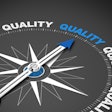AuntMinnie.com is pleased to present the first installment of a three-part chapter titled "Purchasing Capital Equipment" from Radiology Business Practice: How to Succeed, edited by Dr. David Yousem, a professor in the department of radiology at Johns Hopkins Hospital in Baltimore, and Dr. Norman Beauchamp Jr., the chairman of the department of radiology at the University of Washington in Seattle. The book will be published in November by Elsevier. This section of the chapter, authored by Dr. Bob Gayler, addresses radiology as an overall hospital component and capital purchasing strategy.
In a hospital environment, radiology capital needs are typically very large compared to other departments. The endoscopy, information technology departments, as well as the operating rooms and bed and wheelchair replacements, are other relatively large consumers of capital. Since a majority of patients have imaging procedures performed, there is usually support from other departments for radiology to have reliable, high-quality imaging devices. From the hospital administration standpoint, radiology operations usually are operated at a profit.
However, the accounting details of payment by "diagnosis-related groups" has caused a reassessment of the "profitability" of imaging, so simply assuming that radiology is a profit center for the hospital will likely be erroneous. The details of this are beyond the scope of this chapter, but don't be surprised if hospital financial personnel are skeptical if you talk to them about financial return on equipment purchases, especially if the equipment is used primarily or even only for inpatients.
The purchase of capital equipment starts with a perceived need. The expression of this need may start at the user level, administrative level, or may be related to a life cycle timetable. The replacement cycle should not be the same for all categories of equipment. Mature technologies, such as plain-film equipment, need not be replaced on a 10-year cycle, as they frequently last 12 or 15 years. MRI equipment, however, needs major upgrades for technical advance reasons at much shorter intervals.
Purchasing strategy
In a department equipment makeup, you should distinguish between profitable equipment, break-even equipment, and money-losing equipment. Hospitals require full-service imaging operations, while imaging centers may cherry-pick profitable operations. In the hospital it is essential to keep profitable equipment current so that revenue continues. Units that operate at a loss should be kept functional for as long as possible to minimize loss, as long as they are safe and meet regulatory requirements.
The three typical categories of equipment purchase are:
- Current equipment in existing space
- New equipment in existing space
- New equipment in newly constructed space
The reasons for acquiring equipment include:
- Age of the current equipment
- Excessive downtime with current equipment
- Regulatory issues with current equipment
- Safety of current equipment
- Important features on new equipment not available on current equipment (technological obsolescence); compatibility with information systems and electronic imaging system may also be a factor
- Volumes greater than the current equipment can handle
- Planned clinical or research expansion
- Competition (to keep up with other hospitals or imaging centers)
It is important for management to keep an accurate inventory of current equipment, including age, use, maintenance costs, and service issues. These four components form the basis for any cost justification for replacement. Radiologist and technologist users, unless they are part of management, typically do not do a good job of forewarning management about performance issues, so management needs to anticipate problems. The simplest way of anticipating problems is replacement on a timetable, but this is frequently not possible in the cash-strapped health field. Management should also keep current on equipment development through trade shows, throw-away and technical journals, and the rumor mill. Peer-reviewed literature is a late indicator of technical advances in equipment.
By Dr. Bob Gayler
AuntMinnie.com contributing writer
October 9, 2007
Dr. Bob Gayler is an associate professor in the department of radiology at Johns Hopkins University in Baltimore.
Related Reading
Equipment maintenance insurance as a strategic financial tool for imaging centers, June 8, 2007
Refurbished equipment helps imaging facilities do more with less, March 1, 2007
Magnet room equipment and furnishings: The ultimate caveat emptor, July 19, 2006
Copyright © 2007 Elsevier



















